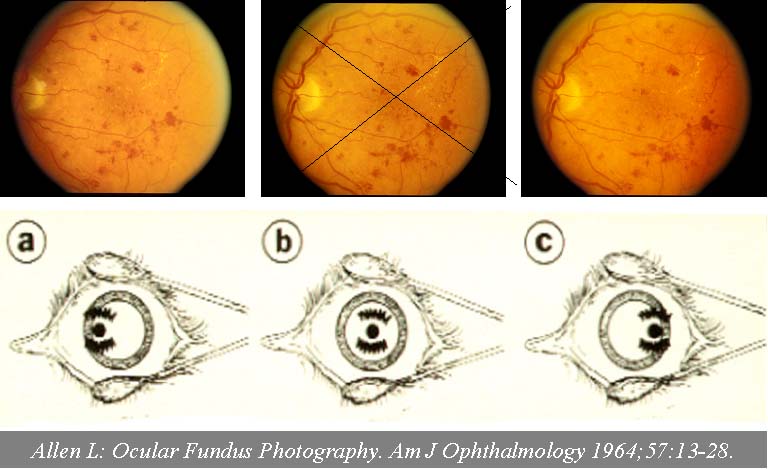Stereo Capture
The capture of non-simultaneous stereo pairs is essential for all studies read by the Central Administrative Research Facility (CARF). Good stereo images require pupillary dilation of at least 6mm. Stereo images are captured with a lateral movement of the camera base between the two images. The camera should not be rotated or pivoted, only moved from left to right with the joystick or by sliding the camera base.
It is customary to capture the left member of the pair first.
Step-by-Step procedure for non-simultaneous stereo capture
- Start by lining up centrally, Figure (b).
- Shift the camera base to the left while maintaining good even illumination, determined by pupillary dilation and the presence of media opacities. Do not rotate the camera.
- Take the 1st exposure near the left edge of the pupil, Figure (a).
- A lateral shift of the camera base is made to the right. Once again do not rotate.
- Take the 2nd exposure near the right edge of the pupil, Figure (c).
- Maximize movement to obtain the most separation allowed by the pupillary dilation (and media opacity).

